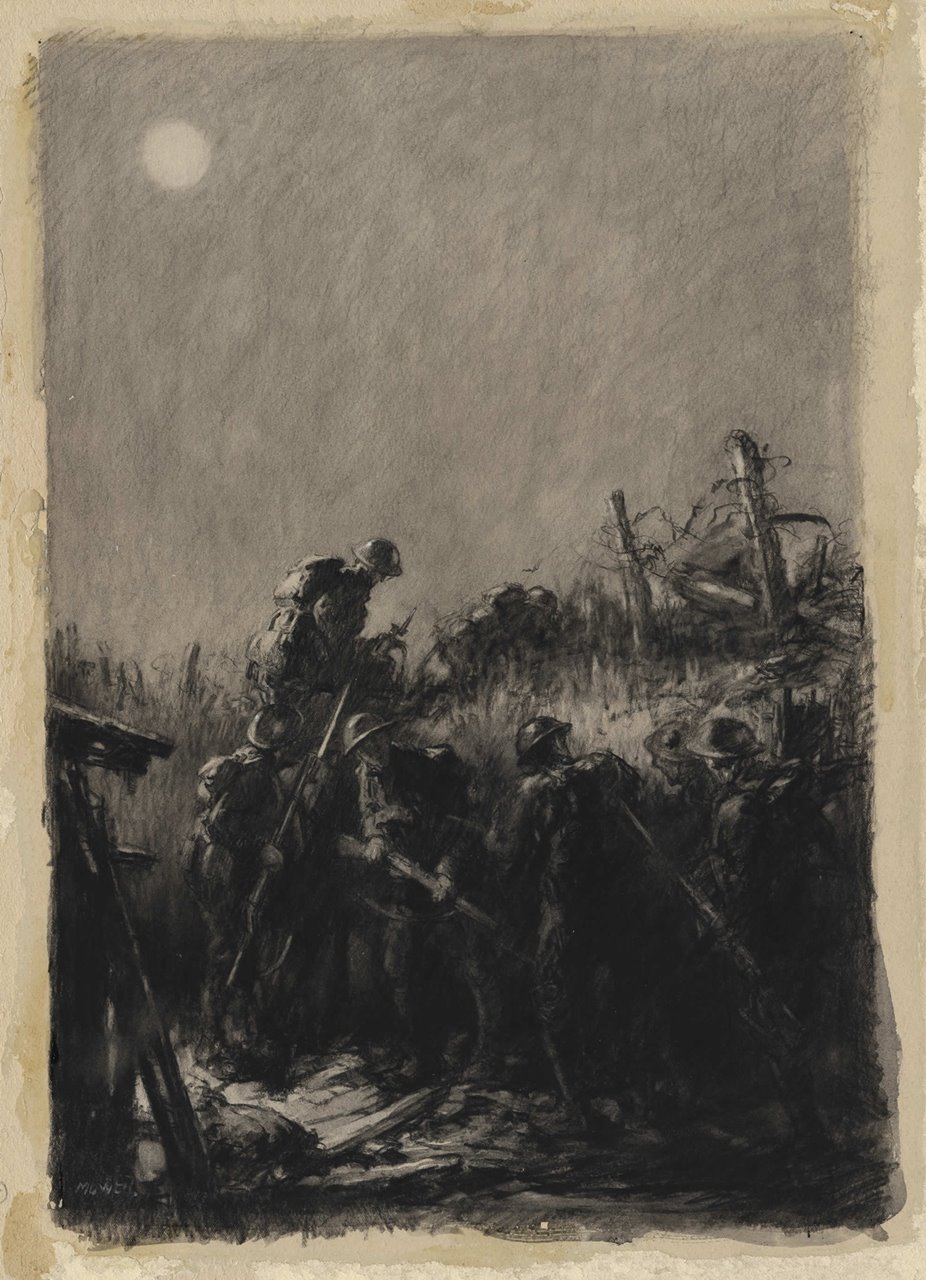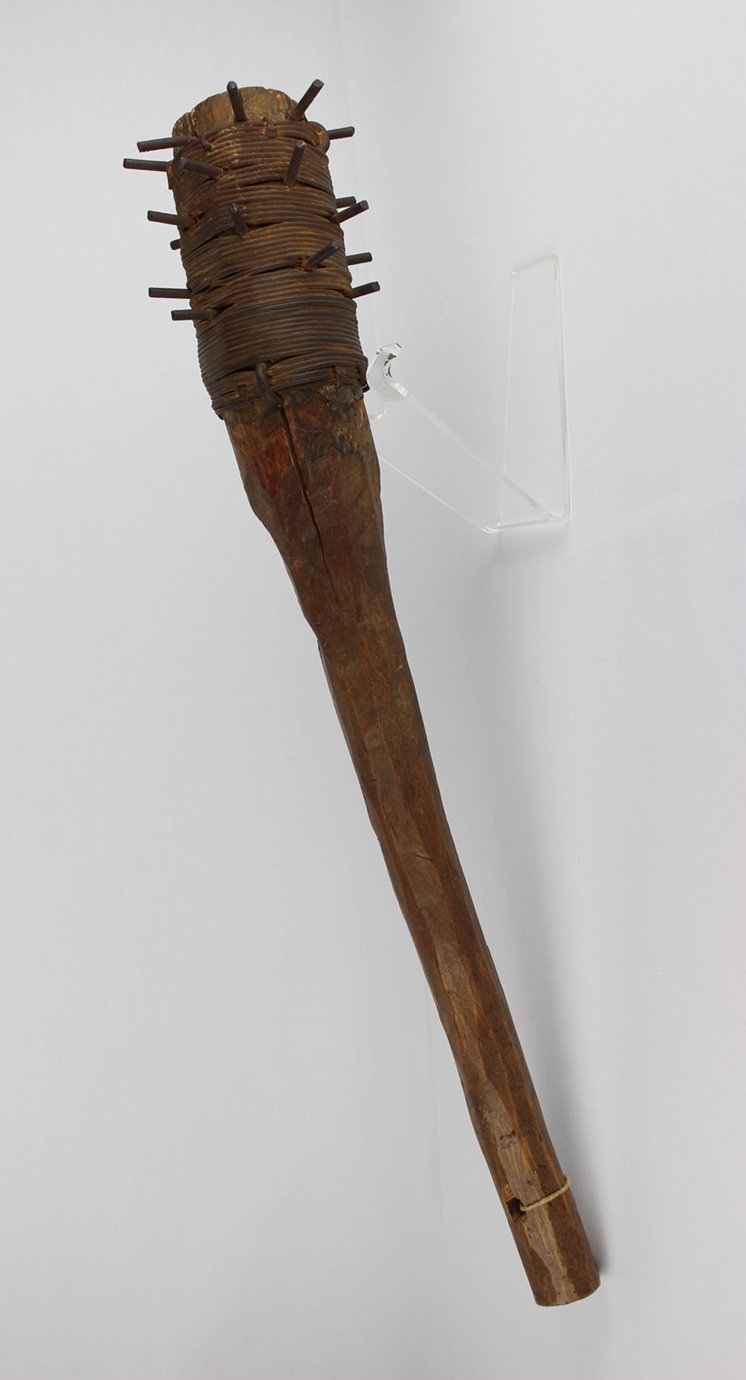Raiding at Vimy
Gathering information about the enemy is a very important part of any war. In the First World War many techniques, like aerial photography and artillery targeting, were used to acquire needed data on enemy location, capability, and movement. However, despite these technological advances, boots-on-the-ground scouting was still required to confirm the information. One way to do that was through trench raiding.
The Canadians quickly gained a reputation as being fierce and skilled fighters. A good part of this standing was due to their raiding successes. In fact, in 1915 the Princess Patrica’s Canadian Light Infantry (P.P.C.L.I., A brief history) were the first of the Entente forces to raid a German trench. However, as the First World War approached its end, the payoff from trench raids decreased as both sides became better able to defend against them.
Why raid trenches?
– to take prisoners, documents, weapons, trophies
– to gather intelligence about the enemy’s strength, positions, supplies, etc.
– to reduce the enemy’s morale
– to damage or sabotage enemy defences
– for a break in the boring routine
– to keep fighting skills fresh and honed
– to reduce the chance of a “Live and let live” attitude
Raiding with Purpose
Before sneaking out into no man’s land to access the enemy’s trenches, participants and their officers came up with a course of action that was planned right down to the minute. The soldiers also had to strategically dress themselves to reduce the potential for them to get noticed by opposing sentries or forces. This meant that soldiers would camouflage their person as best they could.
Burnt cork or brown grease was often smeared on faces or exposed skin. Shiny objects were either left behind or covered up; the same was done for anything that might rattle, clink, or sound-off during movement. Rifles were frequently left behind as well, because the muzzle flash from using it in no man’s land would give one’s position away and the length of the rifle prevented it from much, if any, use during close quarter combat in the opposing trenches. Because one of the primary goals of a raid was to gain information about the enemy, raiders would leave behind their I.D.’s (identification tags) and anything else that could be of use to an interrogator if they were caught.
Secrecy and Silence
Men predominantly used silent weapons during trench raids. Knives, daggers, clubs, and brass knuckles were common. Pistols and Mills bombs were also frequently used – that is, once the element of surprise had been lost or making sound was not much of a concern.
The sizes and goals of various raids were widely variable. For example, a small group of 4 or 5 could go over just to check out the integrity of the barbed wire, the location of a trench, or the strength of defenses. This approach would be considered reconnaissance focussed.
In contrast, there might also be a major undertaking involving multiple hundreds of men who would be tasked with damaging the enemy as much as possible in as short a period of time: a smash, grab, and retreat approach that would also negatively impact enemy morale.
As more and more of these sorties occurred, raiding groups became competitive with each other and tried to one-up their peers by gathering more intelligence, capturing more prisoners, or confiscating more trophies of war.
The 4th Division's Failed Raid, March 1st, 1917
An elaborate plan to destroy some of the trenches around Vimy’s Hill 145 was developed by the officers and upper leadership of the 4th Division (Major General David Watson and Colonel Edmund Ironside). Canada’s 4th was the youngest and least experienced fighting division and they wanted to prove to everyone that they could out-raid any group. The plan was for more than 1 500 men to attack the German’s heavily fortified vantage point and bump them from the hill using phosgene and chorine gas. The chance that the use of gas might backfire made some of the Canadian infantry uncomfortable. That discomfort, taken along with the ever-diminishing potential for surprising the heavily defended Germans, led some of the more senior soldiers and leaders to begin to question the plan. However, the decided course of action took on a life of its own and the attack would occur as soon as the wind conditions would propel the gas against the Germans.
Overconfidence in the ability of the gas, numerous postponements due to incorrect wind, the rigidity of the 4th Division’s leadership, and the fact that the Germans had strengthened their defences by multiples over the preceding 2 years, all played a role in the failure of the raid.
As the hours and days passed, the Germans could sense that an attack was coming and they started taunting the Canadians to come over the top. The raiders could do nothing until the wind was not only blowing in the correct direction, but also adequately strong to push the gas uphill. The 4th Division had to wait.
At this point the reader can probably predict what happened once the raid finally started. Yes, under favourable conditions the first wave of gas was released and was blown towards the Germans; the Canadian soldiers, themselves wearing gas masks, followed it at a distance. It took 2.5 minutes for the gas to touch the German lines, by which time the defenders had easily donned their gas masks. But then the wind died down slightly, changed direction, and ultimately blew the gas back through the advancing Canadians and eventually into the Canadian lines where it wreaked havoc with unprepared troops. In another piece of bad luck, German artillery managed to hit some full gas canisters amongst Canadians waiting in their trenches. Confusion broke loose, many were gassed, and others, who were trying to avoid the poison vapours that they themselves had released, charged into withering German machine gun fire.
At the end of the day, the 4th division had more than 680 casualties, many of whom were their best and most experienced soldiers. After recognizing that their Canadian opponent had lost so many who acted with such valour, the very next morning the German side offered a 2 hour truce (for Mar. 3) so that the Canadian dead could be removed honorably from the battlefield.
This huge loss would come back to haunt the Division weeks later when the entire Canadian Corp launched its attack on Vimy.
Unit Home
Arras Offensive. Field of Battle. Topographic Advantage. Week of Suffering. Richard Jack Painting.
Zero Hour -05:30-
April 9, 1917. Animated Map. Positive Factors. Timeline of Advance. Legion Video. Success.



